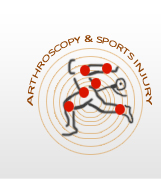| FROZEN SHOULDER |
 |
|
|
Background
|
| Frozen shoulder is also called adhesive capsulitis. It is a common condition which is characterized by pain and restricted motion in the shoulder. The exact cause of the condition is unknown; it usually starts spontaneously without any prior accident. It usually occurs from middle age and onward and is very common in people with diabetes, Thyroid diseases, Hypertension and in women. |
| |
| Prognosis |
The natural course for this condition is for it to go away by itself after 18-24 months. During this period of time it classically
follows the following process: |
- Stage I: approximately 6 months of pain and restricted motion
- Stage II: a further 6 months of predominantly restricted motion with less pain
- Stage III: 6 months of a gradual "thawing" where pain resolves and movement improves.
|
| At the end of this period of time most people have recovered fully; however, a small percentage has a permanent small restriction in motion. |
| |
| Treatment |
Analgesics and anti inflammatories can be helpful to control the symptoms.
Many forms of therapy have been tried to alleviate this condition; however, very few things are actually able to influence the natural course of frozen shoulder. In particular, physiotherapy focusing on stretching exercises should be avoided as it creates pain and does not improve movement nor speed up recovery. Physiotherapy which aims to work on shoulder blade muscles or utilizes local pain control techniques can help with pain relief. |
| |
 |
 |
Fig.1 Frozen shoulder |
Fig. 2 Normal shoulder |
|
| |
| The two recommended forms of treatment are as follows: |
Hydrodilatation
Hydrodilatation is an injection administered by radiologists utilizing ultrasound for guidance whereby fluid under pressure is forced into the joint in order to expand it. This fluid pressure helps to break down some scarring and contraction of the capsule. At the same time cortisone is introduced into the joint which suppresses the inflammation of the lining.
The injection has approximately a 70% success rate at alleviating at least some of the pain and stiffness. The success rate is markedly higher if administered early in the disease process (within the first 3 months).
Surgery |
| |
| Surgery |
| Surgery is performed under general anaesthetic and it involves Arthroscopic Capsular Release and Debridement of thickened, fibrotic Synovial tissue. The procedure is performed as an overnight stay in hospital.
Following the surgery a physiotherapy programme will be commenced so that the gains in shoulder movement can be maintained. This will need to be supplemented with a home exercise plan and this aspect is very important in maintaining and improving movement. A sling is used for only a short period of time immediately following the surgery for comfort. |
| |
| |
